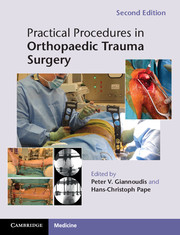Book contents
- Frontmatter
- Dedication
- Contents
- List of Contributors
- Preface
- Acknowledgements
- Part 1 Shoulder girdle
- Part 2 Upper extremity
- 3 Section I: Fractures of the proximal humerus
- 4 Section I: Fractures around the elbow
- 5 Section I: Fractures of the proximal radius
- 6 Fractures of the wrist
- 7 Section I: Fractures of the first metacarpal
- Part 3 Pelvis and acetabulum
- Part 4 Lower extremity
- Part 5 Spine
- Part 6 Tendon injuries
- Part 7 Compartments
- Index
6 - Fractures of the wrist
Published online by Cambridge University Press: 05 February 2014
- Frontmatter
- Dedication
- Contents
- List of Contributors
- Preface
- Acknowledgements
- Part 1 Shoulder girdle
- Part 2 Upper extremity
- 3 Section I: Fractures of the proximal humerus
- 4 Section I: Fractures around the elbow
- 5 Section I: Fractures of the proximal radius
- 6 Fractures of the wrist
- 7 Section I: Fractures of the first metacarpal
- Part 3 Pelvis and acetabulum
- Part 4 Lower extremity
- Part 5 Spine
- Part 6 Tendon injuries
- Part 7 Compartments
- Index
Summary
Indications
Non-displaced scaphoid fractures in active individuals, or multiple injuries.
Do not use this technique if fractures are displaced > 1 mm.
Preoperative assessment
Clinical assessment
Assess vascularity of the hand, particularly the radial artery.
Assess for evidence of neural compromise – particularly in the median nerve distribution.
Assess the condition of the skin in the area of proposed incision.
Assess for tenderness in other areas around the wrist, which may represent a second injury.
Radiological assessment
Anteroposterior, lateral, 45-degree oblique and long-axis radiographs of the scaphoid.
Assess scaphoid length and look for evidence of fracture collapse (humpback deformity, loss of carpal height).
Preoperative consent
Obtain informed consent from the patient, including but not limited to risks, beneits, alternatives, complications and potential outcome.
Operative treatment
The World Health Organization (WHO) Surgical Safety Checklist should be used in the operating room.
Anaesthesia
General or regional (axillary, supra- or infraclavicular block).
Preoperative prophylactic antibiotics as per local hospital/unit protocol.
- Type
- Chapter
- Information
- Practical Procedures in Orthopaedic Trauma Surgery , pp. 149 - 156Publisher: Cambridge University PressPrint publication year: 2014



